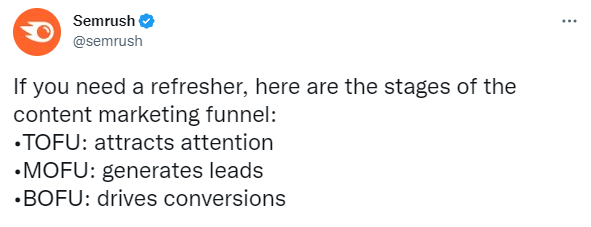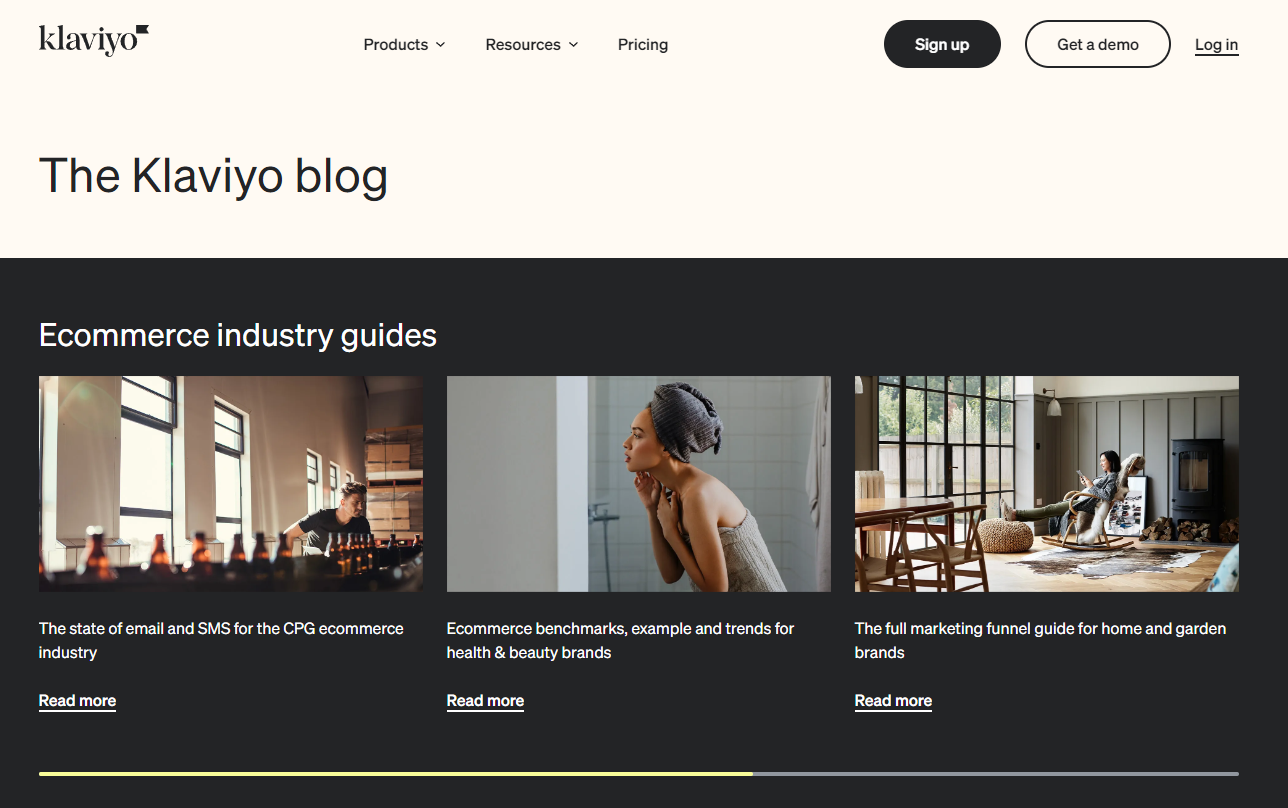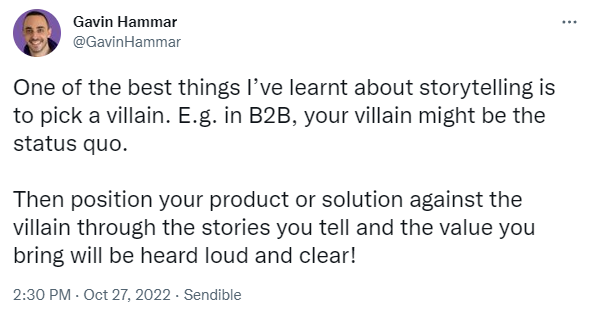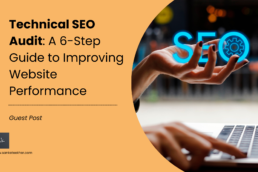One of the top marketing trends in 2022 is content marketing. In fact, in a SEMRush survey, 36% of respondents stated they use content marketing to generate leads. Still, when devising a content marketing strategy for sales support, many B2B organizations struggle. In this article, we’ll look at how you align your content marketing strategy for sales and get the most out of it.
Table of Contents
Elements of a content marketing strategy for sales growth
Your content marketing strategy for sales growth starts with an understanding of a content funnel.
A content funnel refers to the visualization of your potential buyer’s journey through various stages of making a purchase — awareness, evaluation, conversion, and engagement. Since each stage of the journey differs from the other, marketers need to create content that appeals to buyers at their current stage.
To truly comprehend how to increase sales without advertising or being pushy, you need to understand your customer journey map with the help of your content funnel. For this, you can refer to these 3 stages of content:
- ToFu: Top of the funnel
- MoFu: Middle of the funnel
- BoFu: Bottom of the funnel

Source: SEMRush
ToFu content
This is the first stage of the B2B content funnel, where potential buyers are made aware of your business. In this stage, buyers aren’t entirely sure of their requirements and are passively looking for solutions to their vague problems. This is why 76% of blogs revolve around educating audiences with how-to guides.
Some of the content distribution formats in this stage include:
- Blog posts
- Listicles
- Social media content
- eBooks and whitepapers
- Case studies
- Podcasts
- Guides and checklists
- Infographics
Creating a content distribution strategy that incorporates these formats is likely to support your sales efforts since it focuses on your target audience.

Source: Klaviyo
MoFu content
Known as the consideration or evaluation stage, MoFu is where the buyer knows what they need but has not reached the stage of commitment yet. They might be shopping for offers, so you need to offer them content that supports your brand as the best alternative. You can do this by creating content that highlights your product’s value proposition and USP.
A few MoFu content formats include:
- Emails
- Offers
- Landing pages
- Case studies
- Webinars
- Downloadable content (checklists and ebooks)
- Product-based content such as explainer videos
Since you are positioning your brand as the best solution to your customer’s pain points at this stage, creating MoFu content to support your sales initiatives is highly critical.
BoFu content
The final and narrowest stage of the content funnel is to convert your prospects to customers. While the previous stages focused on educating the audience, this stage acquaints them with using your product. Consult with other key departments to analyze the gaps in the market and use that information to persuade prospects to become buyers.
Here are some BoFu content formats:
- Product demos
- Comparison blogs
- Customer success stories
- Free trials
- Client testimonials
- Pricing pages

Source: Zapier
If someone reaches this stage of the funnel, it is safe to assume they are serious buyers. All they need is a slight nudge in the right direction and they will buy from you. So, support your sales team to make a sale by creating bulletproof BoFu content.
Finally, to retain your customers, you can focus on sharing informative articles, product updates, performance reports, guides, and more ToFu content.
5 steps to develop a content marketing strategy for sales
Here’s an easy-to-follow guide to developing a content marketing strategy for sales campaigns:
1. Develop your unique narrative
 Source: Gavin Hammar
Source: Gavin Hammar
If you want to bring in leads, you have to get creative with your approach. There’s no point in rehashing what everyone else is saying. In fact, that’s a surefire way to get your blog posts ignored. Establishing your narrative within your niche is what you need to do. What do you say that other people aren’t talking about? What’s your story that you can tell? That’s what you need to explore and then tell your target audience.
When you consider human psychology, you realize a story is likely to engage people and form a deeper connection over sharing simply factual data points. That’s how you’ll attract prospects and turn them into brand loyalists.
2. Research your audience
While researching your audience demographics is important, it’s equally important to understand their psychographics. If you’re looking for deep insights, start by developing a buyer persona.
Further, you can invest in customer research tools. These research tools will help you get detailed reports on your target audience. You can find out information on gender, age, income level, marital status, and other psychological factors such as their goals, dreams, challenges, pain points, and reason for purchase.
3. Whip up shareable content ideas
Before you start working toward generating quality content ideas and staying on trend, you should assess the type of content you want to create. The 2 major content types are traffic and lead-generating content.
Your content strategy should be targeted at certain demographics. When deciding who you will be writing for, you need to ask yourself, “What stage of the buying cycle are they in?”
Start by creating content for them that will motivate them to take action. The reason for this is if you are trying to get more traffic to your website and you are writing for the wrong people, you will just be wasting your time and resources.
To bring in traffic, try creating videos, infographics, social media content, newsletters, eBooks, and blog posts. In the case of lead-generating content, focus your attention on building lead magnets across your website. These include discounts, free product trials, webinars, event invites, checklists, and other actionable tools.
The bottom line is to target your content so that you are appealing to your specific audience and working toward your content marketing strategy for sales.
4. Decide your content distribution strategy
There are many ways to get your content out to the public and give your sales initiatives the best chance of succeeding. To do this, you’ll need to decide whether to focus on content distribution through social media, paid ads, or organic search.
With organic search, you may want to optimize each page individually with the keywords relevant to that page. For paid ads, you may need more investment but they bring traffic to your website. With social media sites like Socialthink, you will need to decide if you want to seed content and then promote it based on how long and how much interaction it has. These different strategies can help you find a balance between the quality and quantity of content and its return on investment (ROI).

Source: Yannick Veys
For organic content distribution, target search engines, email newsletters, and social media sites such as TikTok, Instagram, Twitter, LinkedIn, and Facebook. For paid distribution, you can look at social media and Google ads, niche influencers, and sponsorships.
5. Track your results
According to Startup Bonsai’s survey, 79% of B2B companies have a content marketing strategy but only 61% measure their content marketing ROI.
So, if you are looking for the best measure of content marketing effectiveness, here are a few metrics you should monitor:
- Shares on social media
- Engagement on posts (comments and likes)
- Website traffic
- Click-through rates (CTR) and impressions
- Customer retention rate
- Backlinks
- Time spent on each page
- Bounce rate
- E-mail subscriptions
- Session time
- New and returning visitors
- Keyword rankings
- Leads generated
Every brand requires a unique approach to content marketing. Since there is no one-size-fits-all solution, you need to let important data from predetermined metrics guide your content efforts.
Ultimately, a successful strategy is one that brings in leads and supports your sales initiatives.
Most effective types of content for sales
For each landing page you create, try to add different content formats that act as lead magnets. According to recent trends, here are some of the most effective types of content for sales:
- Ebooks
- Product demos
- Free trials
- Courses
- Cheat sheets, checklists, and templates
- Pop-ups for email subscriptions
- Email newsletters
- How-to guides
- Podcasts
- Trends and reports
- Event registrations
- Webinars
- Chatbots
- Lead generation forms for gated content
Try to focus on a mix of these content formats and then analyze which of them provides the most return on investment.
Power your marketing strategy for sales with content
If you find yourself asking — “how to increase sales without advertising” or “how you create a successful marketing strategy”, start your journey towards a higher ROI by developing a content marketing strategy that empowers sales efforts.
Of course, your B2B content strategy needs to be supported by great content. If you’re looking to collaborate with a content writer, contact me.
FAQs
How does content marketing help sales?
Content marketing helps sales by building the audience’s trust in your business. Not only does it build brand awareness but it also educates your audience and helps them make informed choices.
What is sales content strategy?
A sales content strategy helps businesses devise, create and manage sales-inclined content. This typically aligns with a company’s sales funnel to help a lead become a customer. A unified sales and marketing content strategy sets up a business for success.
What is a sales and marketing strategy?
A marketing strategy establishes the plan for how you will locate and attract potential customers so you can share your company’s key message and generate interest in the brand. A sales strategy explains how to sell to that market to turn them into paying customers.
Related Posts
March 18, 2024
Technical SEO Audit: A 6-Step Guide to Improving Website Performance
0 Comments9 Minutes


